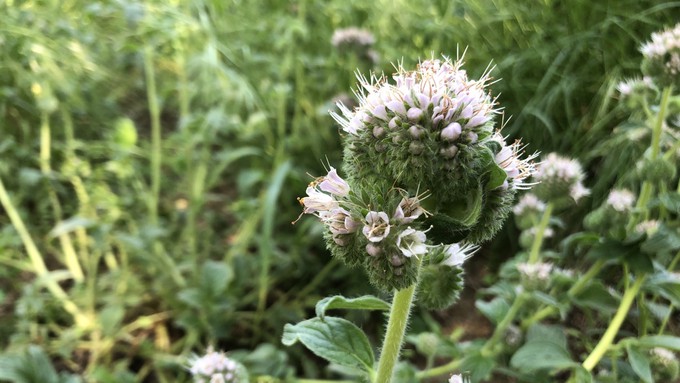
The free tour includes 26 gardens from Folsom to Woodland

This Phacelia californica, aka California scorpionweed or California phacelia, was spotted on an earlier Gardens Gone Native tour. This year's tour is Saturday from 9:30 a.m. to 4 p.m. Kathy Morrison
California natives can be such important parts of residential gardens. But the would-be native gardener, standing in a nursery with a small plant in a 1-gallon pot, might have a tough time envisioning how it's going to fit in with other plants back home.
Can it work in a small garden? How much water does it really need? What does it look like after five years? All crucial information that can be hard to glean from a small tag.
Gardens Gone Native to the rescue! This free self-guided tour of native-centric gardens is the perfect way to view California natives that have found homes in residential gardens. The tour happens Saturday, April 29, from 9:30 a.m. to 4 p.m.
And yes, it's free.
The tour of 26 Sacramento-area gardens is coordinated by the Sacramento Valley Chapter of the California Native Plant Society. Register here to receive the maps of participating gardens, garden descriptions, and more via email.
All 26 sites likely are impossible to visit in one day, so get that online brochure and map out where you'd like to go. Most of the gardens are in Sacramento County, from Folsom to Sacramento's Pocket neighborhood, but some are in Woodland and Davis.
Two are at schools: the Arboretum at Sacramento State and at Bret Harte Elementary; the latter has a new California natives mural created through the Wide Open Walls program. The Miridae Mobile Nursery also will be selling native plants at one of the Sacramento gardens.
Visitors are welcome to ask the garden hosts about their landscape design choices and challenges. The native plants typically are labeled, so be sure to bring a camera (or phone) to record names and what the plant looks like in spring -- certainly a great time of year for California natives.
For more information on the tour, email gardensgonenative@gmail.com
Comments
0 comments have been posted.Sacramento Digs Gardening to your inbox.
Food in My Back Yard Series
May 6: Maintain soil moisture with mulch for garden success
April 29: What's (already) wrong with my tomato plants?
April 22: Should you stock up on fertilizer? (Yes!)
April 15: Grow culinary herbs in containers
April 8: When to plant summer vegetables
April 1: Don't be fooled by these garden myths
March 25: Fertilizer tips: How to 'feed' your vegetables for healthy growth
March 18: Time to give vegetable seedlings some more space
March 11: Ways to win the fight against weeds
March 4: Potatoes from the garden
Feb. 25: Plant a fruit tree now -- for later
Feb. 18: How to squeeze more food into less space
Feb. 11: When to plant? Consider staggering your transplants
Feb. 4: Starting in seed starting
Sites We Like
Garden Checklist for week of May 11
Make the most of the lower temperatures early in the week. We’ll be back in the 80s by Thursday.
* Plant, plant, plant! It’s prime planting season in the Sacramento area. Time to set out those tomato transplants along with peppers and eggplants. Pinch off any flowers on new transplants to make them concentrate on establishing roots instead of setting premature fruit.
* Direct-seed melons, cucumbers, summer squash, corn, radishes, pumpkins and annual herbs such as basil.
* Harvest cabbage, lettuce, peas and green onions.
* In the flower garden, direct-seed sunflowers, cosmos, salvia, zinnias, marigolds, celosia and asters. (You also can transplant seedlings for many of the same flowers.)
* Plant dahlia tubers.
* Transplant petunias, marigolds and perennial flowers such as astilbe, columbine, coneflowers, coreopsis, dahlias, rudbeckia and verbena.
* Keep an eye out for slugs, snails, earwigs and aphids that want to dine on tender new growth.
* Feed summer bloomers with a balanced fertilizer.
* For continued bloom, cut off spent flowers on roses as well as other flowering plants.
* Add mulch to the garden to maintain moisture. Mulch also cuts down on weeds. But don’t let it mound around the stems or trunks of trees or shrubs. Leave about a 6-inch-to-1-foot circle to avoid crown rot or other problems.
* Remember to weed! Pull those nasties before they set seed.
* Water early in the day and keep seedlings evenly moist.